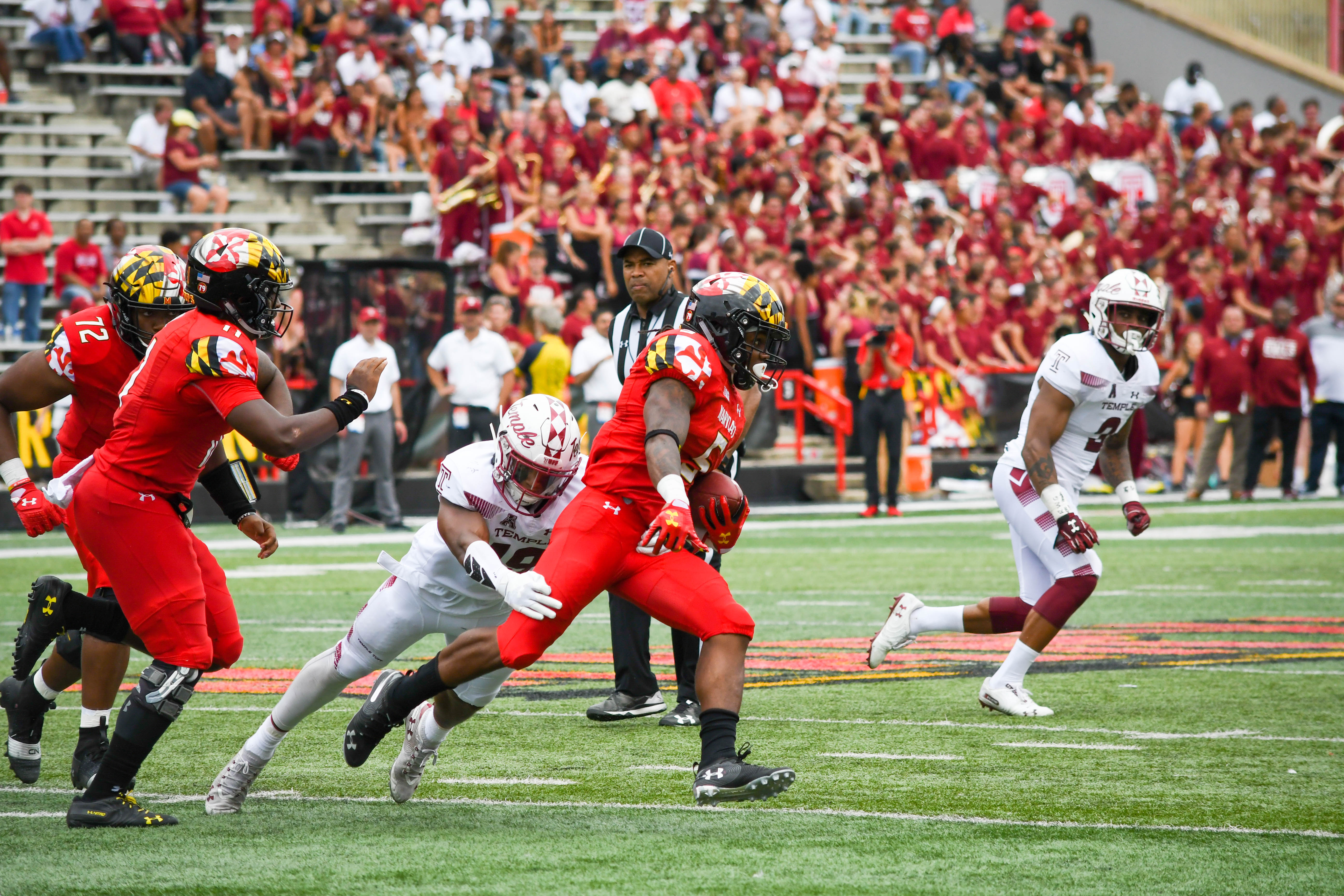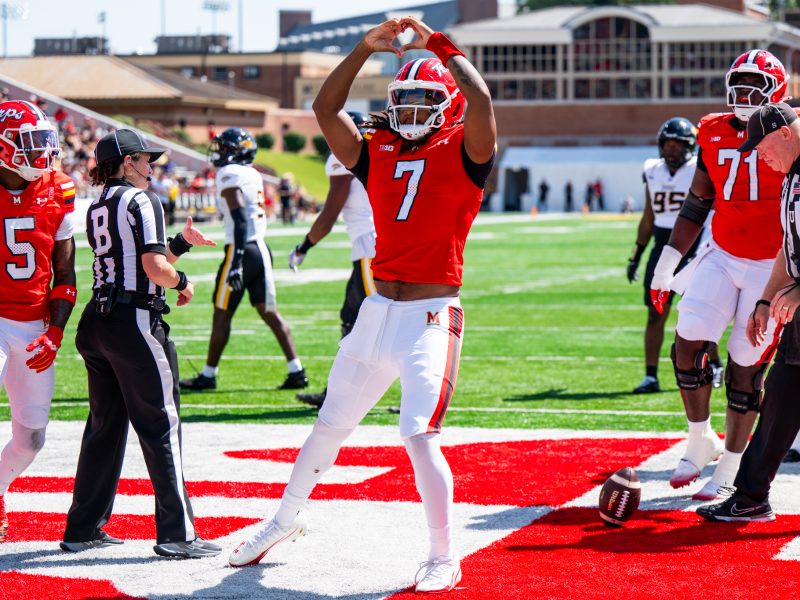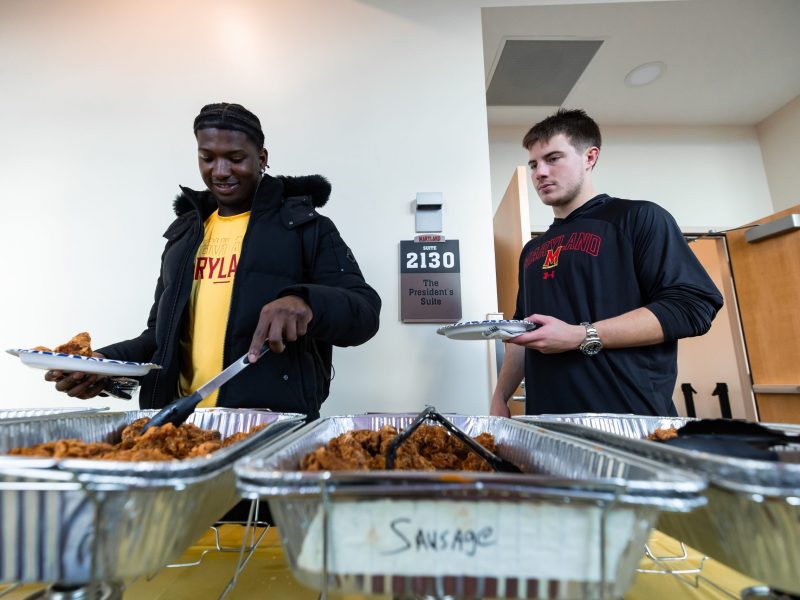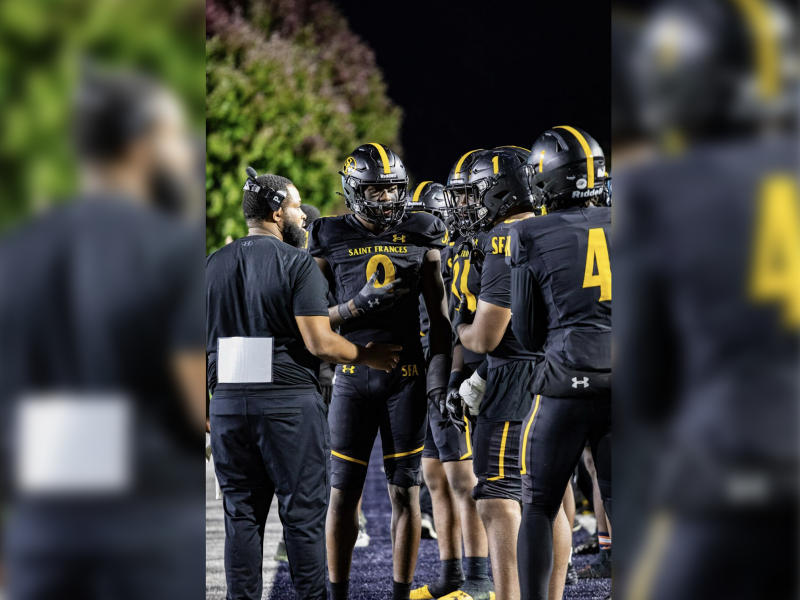DeMatha football coach Elijah Brooks was impressed by what he’d just seen from Anthony McFarland in Maryland football’s spring game. But it wasn’t until after the game, when he talked with McFarland face-to-face on the concourse, that he knew the running back was ready to break out.
McFarland ran for 46 yards and had two catches in the spring game in April, his first live-action football in nearly two years. He had broken his fibula in a scrimmage before his senior year of high school, then redshirted as a freshman with Maryland last season.
McFarland was signing autographs with his teammates postgame, so Brooks waited for the fans to disperse. As he made his way to McFarland, Brooks caught a look in the tail back’s eyes — a confident look, one he’d seen two years before — which confirmed what the coach had suspected all along.
“He knew that he was back. He felt normal for the first time in a couple years,” Brooks said. “The light came on that he could do it.”
[Read more: Maryland football’s Big Ten opener comes on the heels of the Jordan McNair investigation]
Three games into his redshirt freshman campaign, McFarland has flashed the dynamic ability he displayed throughout his DeMatha career. Once ranked as the No. 99 recruit in the nation by 247Sports, McFarland reeled in a 46-yard catch against Bowling Green and rushed for 107 yards against Temple. That production looked routine to Brooks, who watched McFarland perform like that week after week off Route 1 just south of College Park.
Ahead of the Terps’ Big Ten opener against Minnesota, McFarland is primed to continue his development as a standout running back for Maryland, showing the promise he had when he signed as the Terps’ top recruit in 2017.
“He’s not taking any opportunity for granted,” Brooks said. “He has a burning desire to prove to himself and a lot of people that he’s an elite player. And so, he’s only scratching the surface of what he can ultimately be as a player.”
[Read more: Maryland football’s offense “didn’t do anything well” in its loss to Temple]
Heading into his senior year, McFarland was set to take over as DeMatha’s feature back, and he was eager to handle the increased role. Brooks expected him to break 2,000 yards. Instead, the broken fibula wiped out his final high school campaign before it even started.
McFarland grew frustrated while he was sidelined, unable to make the impact he wanted to with the Terps. And with his leg preventing him from working out, he gained weight. Some whispers of doubt reached McFarland, which he used as motivation; Brooks recalls some labeling him “overrated” or a “bust.”
That made even seemingly minor moments — like a spring game, or three yards on two carries in Maryland’s season opener against Texas — feel important.
“He got better, he got faster, he got leaner,” wide receiver Taivon Jacobs said. “Everything that came with his game improved and now you can see it on the field.”
Brooks said he used McFarland in numerous roles at DeMatha, lining him up in the backfield or as a wide receiver and contributing as a returner.
The Terps have relied on that versatility, too. Against Bowling Green, McFarland was the team’s leading receiver; against Temple, he led all ball carriers in attempts and yards.
“He’s a dynamic player with the ball in his hands,” interim head coach Matt Canada said. “He’s a dynamic runner. You saw him come in and be explosive.”
McFarland joined a crowded backfield at Maryland, but that’s nothing new for him. As a freshman at DeMatha, he was behind three future Division I running backs and struggled to get carries. Then he led DeMatha with 1,124 rushing yards as a sophomore, and posted more than 900 total yards in his junior year.
With the Terps, McFarland is behind senior Ty Johnson and junior Lorenzo Harrison on the depth chart. But with Harrison and Jake Funk sidelined with injuries last week, McFarland stepped up.
Two years removed from his broken fibula, McFarland has worked his way into a significant role in Maryland’s offense, casting his own frustration — and any doubters — aside.
“He has an intrinsic motivation to be the best,” Brooks said. “He’s one of the most competitive players I’ve ever coached, and it’s good to see it paying off.”



